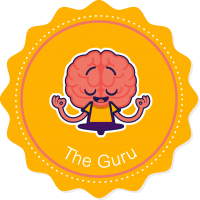To be diagnosed with a specific learning disorder (SLD), a person must meet four criteria.
- Have difficulties in at least one of the following areas for at least six months despite targeted help:
- Difficulty reading (e.g., inaccurate, slow and only with much effort).
- Difficulty understanding the meaning of what is read.
- Difficulty with spelling.
- Difficulty with written expression (e.g., problems with grammar, punctuation or organization).
- Difficulty understanding number concepts, number facts or calculation.
- Difficulty with mathematical reasoning (e.g., applying math concepts or solving math problems).
- Have academic skills that are substantially below what is expected for the child’s age and cause problems in school, work or everyday activities.
- This criterion requires academic skill challenges to be based on standardized achievement measures and “comprehensive clinical assessment.”
- The difficulties start during school-age even if some people don’t experience significant problems until adulthood (when academic, work and day-to-day demands are greater).
- Learning difficulties are not due to other conditions, such as intellectual disability, vision or hearing problems, a neurological condition (e.g., pediatric stroke), adverse conditions such as economic or environmental disadvantage, lack of instruction, or difficulties speaking/understanding the language.


